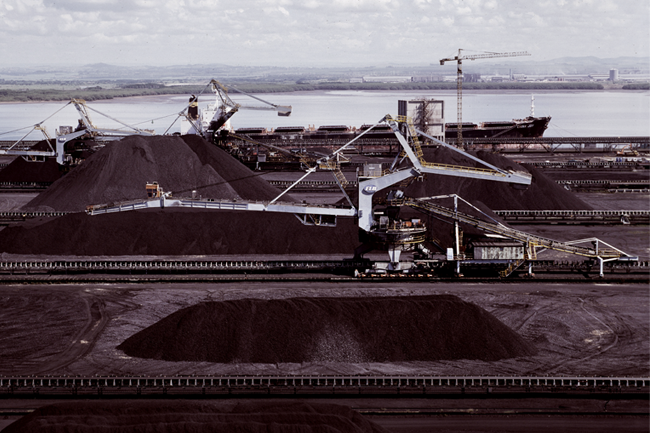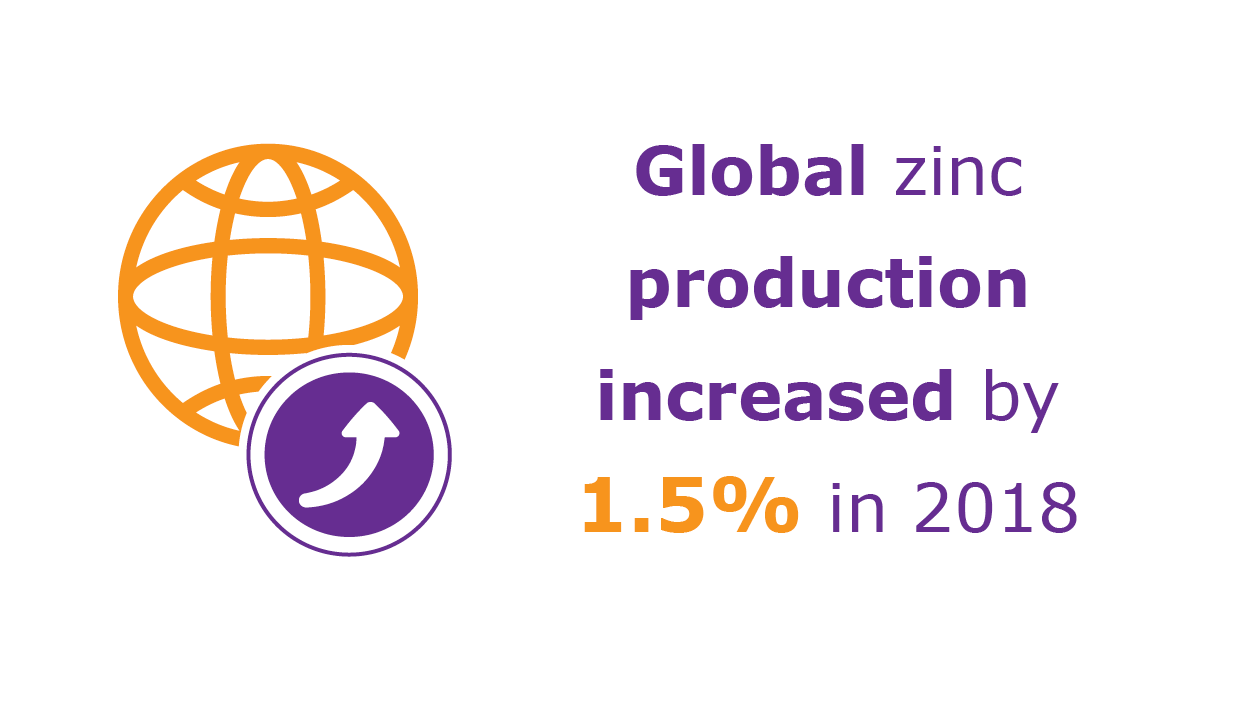Mining has, indirectly and indirectly, dictated the history of harbour development in Southern Africa. The South African diamond rush of 1867 and the discovery of gold in the former Transvaal (in the northern part of South Africa) were major catalysts for the rapid growth of the country’s ports and construction of the railway network from Cape Town, Durban and other harbours to inland mining centres.
More recently, the development of the iron ore export port at Saldanha Bay (on the west coast) and the coal terminal at Richards Bay (on the east coast) were linked to the need to export these minerals.
Although Asian demand for iron ore and coal has declined recently, it has led to upgrades of both ports to accommodate a greater throughput of export cargos.
High-grade lump ore mined at Sishen in the Northern Cape province is highly sought after. Progressive improvements to the rail link from the mines in this region, as well as an extension to the stock pile area and other advancements at Saldanha Bay, mean the port was able to move around 50 million tons of iron ore last year. Further expansion of the iron-ore export facility is planned. In fact, such has been the flow of ore through the port that, besides two ship loaders, skips are also being used to load parcel cargos onto smaller bulk carriers berthed at the multi-purpose terminal. Future plans include two new ore berths with associated conveyor systems and other loading facilities, and a third ore truck tippler plant that will handle three trucks at a time. The expansion could increase the throughput to about 80 million tons per year.
Surprising, to many observers, has been the export of about a million tons of manganese via Saldanha Bay (the port had not handled the mineral previously). It was brought from the Black Rock area in the Northern Cape where the Kalahari basin is regarded as the world’s largest and richest manganese resource.
According to mining company Assmang, manganese mining activities in the area could yield more than 4 million tons per year by the end of the decade. The new development of manganese passing through Saldanha Bay has boosted berth occupancy rates at the multi-purpose terminal and, if mineral output projections are realised, bodes well for future shipping traffic at the port.
The terminal at Port Elizabeth in the Eastern Cape also handles manganese exports. It has experienced growth in exports to such an extent that gantries bearing skips of manganese are now loading bulk carriers at the container terminal when they are not being used for container operations.
In excess of 5 million tons of manganese move through Port Elizabeth each year.
Confident about increased volumes of manganese exports, South African parastatal Transnet National Ports Authority plans to build a new manganese export terminal at the Port of Ngqura. The port was commissioned in 2009 and is located about 10 nautical miles from Port Elizabeth harbour. Originally planned as a bulk port, the absence of an anchor client to generate bulk cargos means Ngqura has become a busy deepwater container hub facility with two berths, with two extra being commissioned shortly.
Increased output from the mine in the Northern Cape is foreseen, and an upgrade to the rail link from the mine to Ngqura will complement the creation of the new manganese terminal which, when completed, will replace the existing facility at Port Elizabeth.
The bulk cargo handling terminal at the Bluff, in Durban, exports a number of minerals, including manganese, which is railed or road-hauled from the mines. These are mainly exported in bulk, but some are placed in one-ton bags and containerised for export.
Since its launch in 1976, the Richards Bay Coal Terminal has become the world’s largest, with six berths and four ship-loaders (the two largest are able to load between 10 000 tons and 12 000 tons per hour). Coal exports of more than 70 million tons pass through the terminal each year. Provision has been made to ship cargos from emerging black-owned mining operations in Mpumalanga and KwaZulu-Natal, and plans are afoot to expand the terminal to increase the throughput.
Plans for massive infrastructural development will have important political and socio-economic spin-offs for Southern Africa
Extensive dune mining in the Richards Bay area has yielded a variety of mineral sands, for which the Durban-based freight movement group Grindrod has provided storage near the port. The company’s storage silo complex, Kusasa Terminals, is an important mineral storage facility. A long, pipe conveyor system – the first successful installation of its kind in South Africa – links the silos to the port’s loading equipment. It is more environmentally friendly than conventional conveyors and provides added protection for the product.
Apart from the storage and movement of product, Kusasa established a bagging plant for zircon and rutile. From 500 one-ton bags a month, the operation now handles more than 5 000 monthly, the majority of which are containerised and exported through the port or trucked to Durban for export. Next to Kusasa is Navitrade Terminal, a bulk facility handling an annual volume of 2.3 million tons of rock phosphate, railed from Mpumalanga.
Like their counterparts in South Africa, Mozambique’s ports also developed largely to handle a variety of bulk mineral cargos from its hinterland. By 1900, Mozambique’s second port Beira was linked to Salisbury (now Harare), not only for passengers but also for agricultural products and later minerals, especially copper and asbestos.
Political events such as the Rhodesian war for independence, Mozambique’s civil war and the end of Portuguese colonial rule, caused a downturn in harbour activities. However, once the situation in the region improved and large deposits of coal had been discovered in Mozambique’s Tete province, Beira was revitalised as a mineral port.
Some 8 million tons of Tete coal are exported each year via the 575 km Sena rail link to Beira, where draught (the depth of water needed to float a specific ship) forces larger vessels to use a mooring buoy outside the port. Smit Serviços Maritimos de Moçambique Limitada provides marine services to Brazilian mining company Vale, off Beira. Coal exports are trans-shipped from lighters towed out to the anchorage by the company’s tugs.
Capacity limitations on the railway line and draught restrictions make it improbable that further development in coal exports will be focused on Beira.
Instead, Vale – the driving force behind the recent coal mining developments – is planning a 912 km rail link from its colliery at Moatize in Tete via Malawi to Nacala in Mozambique. Nacala is the deepest natural port on the continent’s east coast. Once in operation, the project (which includes port upgrades) should see about 18 million tons of coal exported per year.
Another option for the export of Tete coal involves a proposed railway to Macuse (near Quelimane in Zambezia) where a deepwater port is planned, a project signed over to an Italian-Thai consortium. However, funding of around US$5 billion is a major inhibiting factor, as is the Moatize-Nacala railway.
In Maputo, Grindrod Terminal de Carvão da Matola operates a dry bulk terminal that underwent an expansion – completed in October 2013 – to increase the terminal’s capacity from 6 million tons to 7.5 million tons per annum. Currently subject to a feasibility study, the next expansion phase will increase the terminal capacity to more than 20 million tons. The terminal provides the export conduit for both the established and emerging coal mining operators in Southern Africa.
Also in Maputo, Grindrod Mozambique Limitada has a facility to export both coal to Turkey – mainly for the latter’s domestic market – and iron ore. The current throughput capacity is some 4 million tons per annum.
Dredging projects to deepen the port to accommodate panamax vessels will assist in the turn-around time of ships and increase export volumes – potentially up to around 40 million tons.
South of Maputo lies Ponta Techobanine, earmarked for development as a deepwater port for coal exports originating in land-locked Botswana. The plan (currently on hold) is to move the coal on a new railway that will be run via Zimbabwe.
Another ambitious, but seemingly stalled, plan to link the Botswana coalfields by rail to Walvis Bay in Namibia will enable Botswanan collieries to export to Europe. At the same time, the new port at Ponta Techobanine will give the country an additional access port for trade with Asia.
If implemented, these plans for massive infrastructural development will have important political and socio-economic spin-offs for Southern Africa. Desperate to earn foreign exchange from mineral exports and create thousands of jobs to meet the expectations of the many unemployed, upgrading and expanding transport networks will carry ores in greater volumes to the enlarged and new export harbours, and open the job market.
Mineral beneficiation plants at the ports could expand employment opportunities and earn even more foreign exchange.






